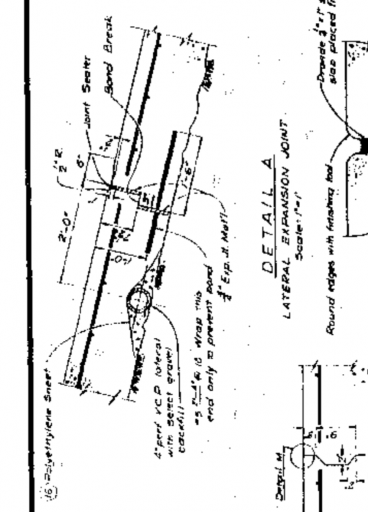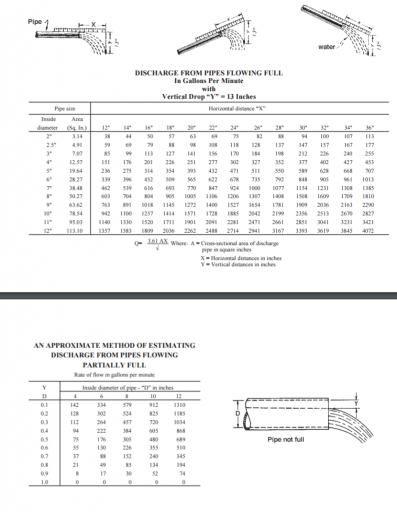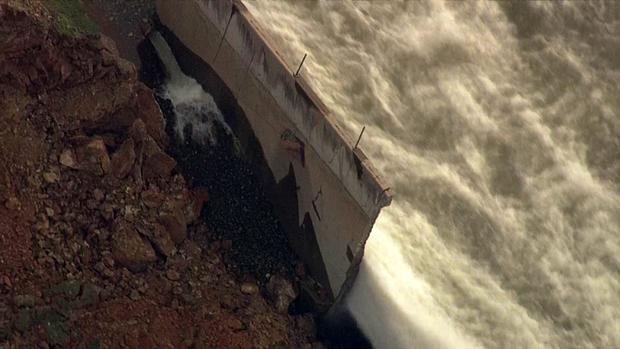Great find. I was looking at that and trying to decipher what it represented.
What I do not yet understand:
1) The vertical dimension form top of slab to the C/L of the dowel is indicated as 1'-0"
There is no dimension given for the depth of slab from C/L of the dowel to the bottom of the slab. By eyeball this dimension appears to be no more than 2" for a full slab depth of 12" The figure of 15" for depth of the cast slab has been thrown around. This 15" depth now seems incorrect.
I tend toward the 15" nominal/average thickness for the slab. I cite the 7 1/2" dimension from the slab surface to the offset of the lateral expansion joint in detail A. Also, some of the other details show a 1'-3" overall slab thickness.
2) Regardless of the given dimension, the photographic evidence strongly suggests that this would have been a minimal distance and that slab pour would conform with the bedrock and act to compensate for variances in the bedrock surface.
3) Para 2 suggests that in those areas of relatively soft and friable material (I will call this type of subsurface "garbbro") the contractor would be able to rip the surface and bring it to within a relatively close tolerance of the desired depth. This depth would be planar across the spillway in the area of the gabbro. In those areas where the subsurface was composed of a much harder, more competent rock (I will call this type of rock "chert") it would not be so easy to achieve a smooth and uniform surface. The slab in this area appears to vary considerably in depth.
I tend to agree. But the contractor would have made a significant effort to have a 'relatively' uniform slab thickness, otherwise, he wouldn't be able to calculate concrete quantities.
4) It therefore seems to be a valid conclusion that the spillway is composed of two distinct slab types: 4.1) the relatively uniform gabbro slab which is situated over areas of subsurface which are known to be subject to weathering such that the uniform and smooth slab base is bonded to less competent rock. This raises a question as to the strength of that bond; and 4.2) the areas of chert in which the rock will have been resistant to ripping, in which it would have been much more difficult to obtain a uniform and relatively smooth surface. The slab in these areas would exhibit the variable depth noted in the photographic evidence, and would likely achieve a bond with a much stronger grade of rock. In addition to this bond, the slab in these areas would be mechanically locked to the subsurface due to the slab pour conforming to the high tooth of the rock surface.
Also, in the areas where the chert is present, the full 5'-0" depth of the #11 (1 3/8" dia) anchor bar would be grouted into the undisturbed rock. See detail B
5) This perspective suggests a number of variable stress risers present in the slab. It is noted that the spillway failure occurred in an area of the slope in which the material on each side of the point of failure is the reddish material which appears to be a loose and unconsolidated aggregate, easily eroded. This perspective also lends weight to the suggestion raised by wrorke with respect to possible slip.
I agree. The area of initial failure is an area that would be more easily eroded. I cannot get away from the evidence that the sidewall drain in that area wasn't functioning. All the others were flowing, so it is logical there was water in that area, and if there was, it had to be going somewhere. Possibly eroding the grabbo fill under the slab, beneath the wall footer, or just outside the wall. Or all three.
6) From the C/L of the VCP to the joint between slabs is given the dimension 2'-0." I do not understand the reason for this dimension. Does it suggest a relationship between slab joints and the first diagonal in the french drain?
This is an interesting dimension. It suggest that the VCP ran parallel to the joint. But we need to see the drainage general arrangement dwg to be sure. Also, see how the dwg shows the VCP resting ATOP the fill and up into the slab. Was that also typical in areas that had to be filled, or was there a conventional trench?
7) There is a dimension of 6" shown from the slab joint to some variation in the slab surface downstream of the joint. There is a second unreadable dimension given for something indicated just beneath the slab surface. What might this represent?









